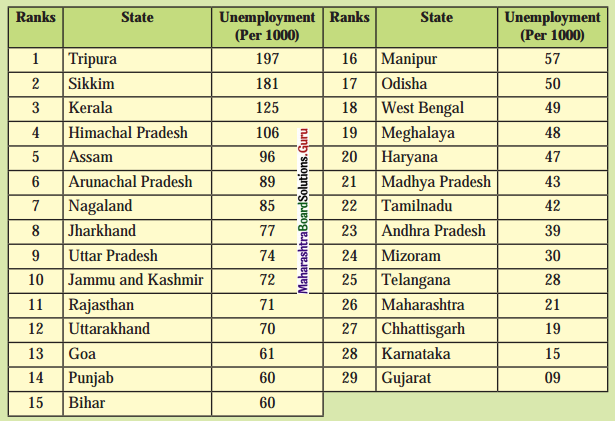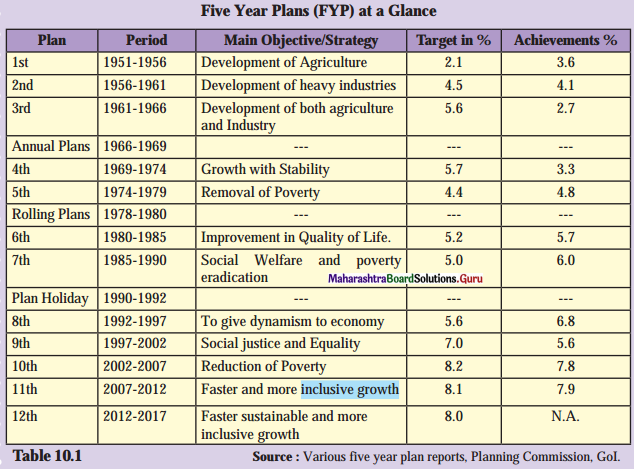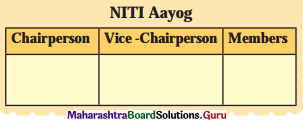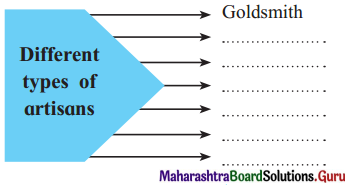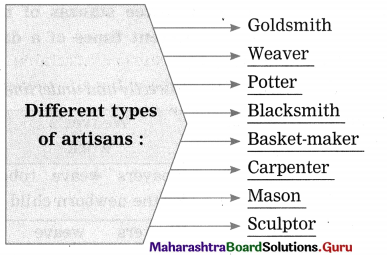Balbharti Maharashtra State Board Class 11 Economics Important Questions Chapter 10 Economic Planning in India Important Questions and Answers.
Maharashtra State Board 11th Economics Important Questions Chapter 10 Economic Planning in India
1A. Choose the correct option and rewrite the sentence.
Question 1.
Statements related to definitions of Economic Planning:
(a) A time-bound programme.
(b) Non-continuous process.
(c) Conscious and deliberate choice of economic priorities.
(d) Making of major decisions.
Options:
(1) a, b, c, and d
(2) b, c, and d
(3) a, c and d
(4) None of these
Answer:
(3) a, c and d
Question 2.
Features of Economic planning:
(a) Continuous process
(b) Mobilisation of resources
(c) Does not require co-ordination
(d) Flexible in approach
Options:
(1) a and b
(2) c, d and a
(3) b, c, and d
(4) a, b and d
Answer:
(4) a, b and d

Question 3.
Targets of 12th Five-year plan:
(a) To focus only on agricultural growth.
(b) To reduce the head-count ratio of poverty by 10%.
(c) To increase investment in infrastructure.
(d) To increase green cover by 1 million hectares.
Options:
(1) b, c, and d
(2) a, c and d
(3) c and d
(4) a and d
Answer:
(2) a, c and d
Question 4.
Functions not related to NITI Aayog.
(a) Knowledge and Innovation Hub.
(b) Centralised planning.
(c) Decentralised planning.
(d) Country’s best friend at the center.
Options:
(1) a
(2) a and c
(3) b and d
(4) d and c
Answer:
b and d.
1B. Complete the correlation:
Question 1.
1st Five year plan : Development of agriculture : : 12th Five year plan : ___________
Answer:
Faster sustainable growth
Question 2.
1997 – 2002 : 9th Five year plan : : 2012 – 2017 : ___________
Answer:
12th Five year plan

Question 3
Economic growth : To achieve GDP growth rate at 8% : : Health : ___________
Answer:
To reduce fertility rate to 2.1%
Question 4.
Prime Minister : Chairperson : : Members of Union Council of Minister : ___________
Answer:
Ex-Officio Members
Question 5.
Features of Economic Planning : : ___________ Target of 12th Five year plan : Economic growth.
Answer:
Mobilisation of Resources
Question 6. ___________ 1966 1969 : : Rolling Plans : 1978 – 1980.
Answer:
Annual Plans.
1C. Suggest the economic terms for the given statements:
Question 1.
It is a new framework for five years plan.
Answer:
NITI Aayog
Question 2.
Lecture series organized by NITI Aayog.
Answer:
Transforming India
Question 3.
A pillar of NITI Aayog.
Answer:
Doubling of Farmer’s Income

Question 4.
A body comprising Chief Ministers of all States and Governors of Union Territories.
Answer:
Governing Council
Question 5.
A team of experts and specialists in NITI Aayog.
Answer:
Special Invitees
Question 6.
A function of NITI Aayog.
Answer:
State’s Best Friend at the center
1D. Arrange in proper order:
Question 1.
Objectives of the five-year plan in order of preference.
(a) Removal of Poverty
(b) Development of Agriculture
(c) To give dynamism to the economy
(d) Development of heavy industries
Answer:
b, d, a, c
Question 2.
The organizational framework of NITI Aayog.
(a) Ex-officio Members
(b) Chairperson
(c) Chief Executive Officer
(d) Vice-Chairperson
Answer:
b, d, a, c
1E. Find the odd word out:
Question 1.
NITI Aayog –
(a) Chairperson
(b) Ex-officio Members
(c) Vice-Chairperson
(d) Vice-Chancellor
Answer:
(d) Vice-Chancellor

Question 2.
The importance given under 12th five years plan to increase –
(a) GDP
(b) banking services
(c) infant mortality
(d) employment
Answer:
(c) infant mortality
Question 3.
Structure of NITI Aayog –
(a) National Development Council
(b) Governing Council
(c) Regional Council
Answer:
(a) National Development Council.
1F. Complete the following statements:
Question 1.
Full time organizational framework of the NITI Aayog consists of ___________
Answer:
Vice-Chairperson and Chief Executive Officer
Question 2.
The vice-chairman of NITI Aayog is appointed by ___________
Answer:
Prime Minister
Question 3.
NITI Aayog was established on ___________
Answer:
1st January 2015
Question 4.
Special Invitees in the Structure of NITI Aayog are nominated by ___________
Answer:
The Prime Minister
Question 5.
Since, 2015, planning commission was replaced by ___________
Answer:
NITI Aayog

Question 6.
The resources needed for planning are mobilised through ___________
Answer:
taxation, domestic savings, deficit financing, etc
Question 7.
In India, planning is generally for a period of ___________
Answer:
five years
Question 8.
The period 1990 – 1992 was considered as ___________
Answer:
Plan Holiday
Question 9.
A body formed to address specific issues is called as ___________
Answer:
Regional Council
1G. Choose the wrong pair:
Question 1.
| Group – ‘A’ | Group-‘B’ |
| 1. Development of Agriculture | (a) 1st five-year plan |
| 2. Growth with stability | (b) 4th five-year plan |
| 3. Improvement in quality of life | (c) 12th five-year plan |
Answer:
Wrong Pair: Improvement in quality of life – 12th five-year plan.
Question 2.
| Group – ‘A’ | Group – ‘B’ |
| 1. Planning Commission | (a) 1950 |
| 2. NITI Aayog | (b) 2011 |
| 3. 1st five-year plan | (c) 1951 |
Answer:
Wrong Pair: NITI Aayog – 2011.
1H. Choose the correct pair:
Question 1.
| Group – ‘A’ | Group – ‘B’ |
| 1. NITI Aayog | (a) Chairman of NITI Aayog |
| 2. All Chief Ministers of State | (b) Plan Holiday |
| 3. Prime Minister of India | (c) Governing Council |
| 4. 1990-92 | (d) Think Tank |
Options:
(1) 1 – a, 2 – c, 3 – d, 4 – b
(2) 1 – d, 2 – c, 3 – a, 4 – b
(3) 1 – b, 2 – c, 3 – d, 4 – a
(4) 1 – c, 2 – d, 3 – a, 4 – b
Answer:
Correct pair: (2) 1 – d, 2 – c, 3 – a, 4 – b

2. Identify and explain the concepts from the given illustrations:
Question 1.
Vedant gets his student scholarship directly in his a/c linked with Aadhar.
Answer:
Service Delivery.
It is the important target of the 12th five-year plan. The main aim behind this policy is to prevent corruption.
Question 2.
To solve the problems of the housing society, members form a committee that discusses and solves the issues of the members.
Answer:
Think-Tank.
It is important to function of NITI Aayog to solve the problems of our country.
Think-Tank is a group of experts who are discussing and solve various problems of India.
3. Assertion and Reasoning – Choose the correct answer from the following:
Question 1.
Assertion (A) – NITI Aayog takes note of the dynamic change in the Indian economy.
Reasoning (R) – Considering the economic, social, and technological differences in underdeveloped districts, the body plans to implement various programmes and bring about economic changes.
(i) (A) is true but (R) is False.
(ii) (A) is false, but (R) is True.
(iii) Both (A) and (R) are true and (R) is the correct explanation of (A).
(iv) Both (A) and (R) are true, but (R) is not the correct explanation of (A).
Answer:
(iv) Both (A) and (R) are true and (R) is not the correct explanation of (A).

Question 2.
Assertion (A) – In 1950 the government-appointed planning commission.
Reasoning (R) – After independence, India was facing the problem of poverty, unemployment, inequality, low national income, etc.
(i) (A) is true but (R) is False.
(ii) (A) is false, but (R) is True.
(iii) Both (A) and (R) are true and (R) is the correct explanation of (A).
(iv) Both (A) and (R) are true, but (R) is not the correct explanation of (A).
Answer:
(iii) Both (A) and (R) are true and (R) is the correct explanation of (A).
Question 3.
Assertion (A) – In 1950, India adopted economic planning to accelerate the rate of GDP, employment, export, etc.
Reasoning (R) – In India, the duration of economic planning is 7 years.
(i) (A) is true but (R) is False.
(ii) (A) is false, but (R) is True.
(iii) Both (A) and (R) are true and (R) is the correct explanation of (A).
(iv) Both (A) and (R) are true, but (R) is not the correct explanation of (A).
Answer:
(i) (A) is true but (R) is False.
Question 4.
Assertion (A) – The NITI Aayog has been created a group of experts as a Think Tank.
Reasoning (R) – Think Tank will work on various problems and find out solutions to them.
(i) (A) is true but (R) is False.
(ii) (A) is false, but (R) is True.
(iii) Both (A) and (R) are true and (R) is the correct explanation of (A).
(iv) Both (A) and (R) are true, but (R) is not the correct explanation of (A).
Answer:
(iii) Both (A) and (R) are true and (R) is the correct explanation of (A).
Question 5.
Assertion (A) – 12th five-year plan encouraged the development of agriculture, education, etc.
Reasoning (R) – Secondary education for all by 2017.
(i) (A) is true but (R) is False.
(ii) (A) is false, but (R) is True.
(iii) Both (A) and (R) are true and (R) is the correct explanation of (A).
(iv) Both (A) and (R) are true, but (R) is not the correct explanation of (A).
Answer:
(iii) Both (A) and (R) are true and (R) is the correct explanation of (A).

Question 6.
Assertion (A) – In 2015, the planning commission was replaced by NITI Aayog.
Reasoning (R) – To construct a strong state that will help to build a dynamic and strong nation,
(i) (A) is true but (R) is False.
(ii) (A) is false, but (R) is True.
(iii) Both (A) and (R) are true and (R) is the correct explanation of (A).
(iv) Both (A) and (R) are true, but (R) is not the correct explanation of (A).
Answer:
(iii) Both (A) and (R) are true and (R) is the correct explanation of (A).
4. Distinguish between:
Question 1.
Planned Economy and Unplanned Economy.
Answer:
| Planned Economy | Unplanned Economy |
| (i) In a planned economy all economic decisions are taken by the central planning authority. | (i) In an unplanned economy all economic decisions are taken by market forces of demand and supply. |
| (ii) Indian economy adopted economic planning in 1950. | (ii) American economy is an unplanned economy. |
| (iii) Goals/objectives are predetermined. | (iii) Objectives/goals are not predetermined. |
| (iv) Resources are used deliberately so there is no possibility of wastage of resources. | (iv) There is a possibility of wastage of resources. |
Question 2.
Objectives of 10th Plan and Objectives of 11th Plan.
Answer:
| Objectives of 10th Plan | Objectives of 11th Plan |
| (i) The main objective of the 10th Plan was ‘transforming India into the fastest-growing economy of the world.’ | (i) The main objective of the 11th plan was towards ‘rapid and more inclusive growth of Indian economy. |
| (ii) It proposed economic growth at the rate of 8% p.a. | (ii) It proposed economic growth at the rate of 9% p.a. |
| (iii) Another important aim was to improve software services, IT services, etc. | (iii) Another important aim was to reduce the disparity between rural and urban areas, improving the quality of life of people, etc. |
5. Answer the following:
Question 1.
What are the targets of the 12th five-year plan for infrastructure?
Answer:
Targets for infrastructure are:
- To connect all villages of a country with all-weather roads.
- To increase rural television and telephone density to 70%.
- To increase infrastructure investment to 9% of G.D.P.
- To upgrade national and state highways to a minimum two-lane standard.
- To achieve real GDP growth rate at 8%, agriculture growth rate at 4%, and manufacturing and industrial growth rate at 10%.
- To reduce the headcount ratio of poverty by 10%.
- To create 50 million (5 crores) new work opportunities in the non-farm sector.
- To increase average years of schooling to 7 years.
- To eliminate gender and social gap in school enrollment.
- To reduce the total fertility rate to 2.1%.

Question 2.
What is Economic Planning? Give objectives of last three five-year plan.
Answer:
Economic Planning:
- Economic planning is a time-bound programme to achieve certain objectives by allocating available resources.
- In the 10th five-year plan main objective was a reduction of poverty.
- In the 11th five-year plan main objective was faster and more inclusive growth.
- In the 12th five-year plan main objective was faster, sustainable, and more inclusive growth.
Question 3.
State the pillars of NITI Aayog.
Answer:
The pillars of NITI Aayog are as follows:
- Vision Document of India
- Appraisal Document of 12th five-year Plan.
- Transforming India: Lecture series organized by NITI Aayog.
- Doubling of Farmers’ Income
- Outcome Budget and Output-Outcome Framework.
- Global Entrepreneurship Summit 2017
- Launching of Programme to transform identified aspirational districts.
Question 4.
Write a note on the ‘Think Tank’ function of NITI Aayog.
Answer:
- ‘Think-Tank’ is a group of experts who come together, to form an organisation.
- They study the various problems of an economy and try to bring solutions to solve those problems.
- It is counted under a premier policy of the Government of India.
- Its main objective is to find a shared vision of national development with the active participation of the states.
- It provides guidance to foster ‘co-operative federalism’ in the states.
6. State with reasons whether you agree or disagree with the following statements:
Question 1.
No progress has been made in India in 50 years of economic planning.
Answer:
No, I do not agree with the statement.
Starting from, First Five Year Plan in 1951 to over 50 years, India has made progress in almost all spheres and is moving towards globalization in the following ways:
- There has been an expansion of industrial capacity.
- Creation of infrastructure.
- Progress in science and technology.
- Promotion of exports.
- Improvement in human quality.
- Earning foreign exchange, etc.
- Thus, we cannot say that India has made no progress since 50 years of its economic planning.

Question 2.
Planning can break the vicious circle of poverty.
Answer:
Yes, I do agree with the statement.
- In a developing country, poverty becomes both, the cause and effect of poverty.
- In poor or developing countries people earn less, save less, productive investment is low and so their earnings are low.
- This is called the vicious circle of poverty.
- Through economic planning, this vicious circle of poverty can be broken.
- The government through planning raises the rate of investment.
- This leads to a rise in profit, a rise in incomes and savings, and then again more investment.
- Hence, Planning can break the vicious circle of poverty.
Question 3.
The tenth Five Year Plan was completely successful.
Answer:
No, I do not agree with the statement.
- Even though the Tenth Five Year Plan could achieve certain targets like increase in growth rate, savings, investment, FDI,
- exports, etc. it has certain failures also. They are:
- Agricultural production could increase only by 25% as against the target of 4%.
- Due to the use of capital-intensive technology in production unemployment increased.
- Regional imbalances and poverty between states could not be curbed down.
- The private sector was given more importance.
Question 4.
The basic objective of economic planning in India is to bring about economic development.
Answer:
Yes, I do agree with the statement.
- When India got independence, it was caught in the vicious circle of poverty.
- There were many macroeconomic problems like food scarcity, illiteracy, mass communicable diseases, high mortality rate, etc.
- So economists felt that economic planning would be an ideal way to solve these problems and to achieve rapid economic development in India.
7. Answer in detail:
Question 1.
What is Economic Planning? Explain the targets of the 12th five-year plan.
Answer:
Economic planning is a time-bound programme to achieve certain objectives by allocating available resources under the control of a central planning authority.
Prof. H. D. Dickinson defines economic planning as – “Economic planning is the making of major economic decisions such as what and how much is to be produced how, when and where it is to be produced, to whom it is to be allocated, by the conscious decision of the determinate authority, on the basis of a comprehensive survey of the economy as a whole.”

12th Five Year Plan (2012-2017):
This plan emphasizes ‘Sustainable Growth’. This plan focused on the development of the manufacturing sector, agriculture, education, health, and social welfare, etc.
(i) Economic Growth:
- It aims at an average GDP growth rate of 8%.
- It seeks to achieve 4% growth in the agriculture sector.
- Every state’s average growth rate must increase as compared to the 11th plan.
(ii) Poverty and Employment:
- It aims at reducing the head-count ratio of poverty by 10%.
- Generating 50 million employment opportunities in the non-farm sector and providing skill certification.
(iii) Education:
- Eliminating gender and social gap in education.
- Secondary education for all by 2017.
- Access to higher education with reference to skill development.
(iv) Health:
- Reducing rate of infant mortality.
- Reduce total fertility rate to 2.1%
- National Family Health Survey (NFHS – 4) was conducted in 2014-2015. In NFHS-4, reduce malnutrition among the children (0-3 years) was the target.
(v) Infrastructure:
- Increase infrastructure investment to 9% of GDP.
- Achieving universal road connectivity and access to power for all villages.
- To increase electricity by adding 80,000 MW and 55,000 MW of renewable energy capacity.
- Connecting all villages with all-weather roads and upgrading national and state highways to a minimum two-lane standard.
- Modified and accelerated irrigation benefit programme.
(vi) Service Delivery:
- Provision of banking services for 90% of households in India.
- Major welfare benefits and subsidies through Aadhar card.
(vii) Environment:
- Increasing green cover by 1 million hectares every year.

8. Read the following passage and answer the questions given below:
Passage – 1
The Finance Minister of the Central Government presents the Union Budget before the Parliament during the month of February every year. The budget, also referred to as the annual financial statement reflects the estimated receipts and expenditure of the government for a particular financial year that begins on the 1st of April and ends on 31 sc March. Changes in the tax structure are suggested in the budget. Besides this, provisions are also made for allocating expenditure on defense, education, research, and development, etc. The date for presenting the budget has been shifted to the 1st of February every year. This enables the generation of funds well in advance prior to the commencement of the financial year.
Question 1.
What is the duration of the budget?
Answer:
The budget is for one year starting from 1st April to 31st March.
Passage – 2
Access to clean cooking fuel is a huge problem in India. Especially in villages wood is used for cooking purposes. Due to this, women’s experiences headache, breathing issues, eyes and lung problems and sometimes even burnt their sarees or some part of their body. 5 lakh women lose their lives every year because of smoke emitted by the ‘Chula’. After independence, this problem was recognized, but it was difficult to eliminate at the micro/village level. The state government is a very important part of NITI Aayog. They are implementing national policies at the village, district, and state levels.
In Uttar Pradesh. Ballia district was selected by the various experts for clean cooking fuel. It was a huge scheme in terms of the scale of implementation. Dineshwar Giri (Village Pradhan), Ashutosh Jindal (IAS), Dharmendra Pradhan (Minister of state for petroleum and Natural Gas, Government of India), S.T. Sathiavageeswaran (Executive director information system in HPLL), C. S. Chakrabarty (Chief General Manager (IOCL)) have given their huge contribution to make this Yojna a grand success. This Yojna was worked from the bottom level.
Cylinder providers were also supposed to fillup form for the LPG receivers on the ‘Collect App’ which work perfectly in offline scenario and it is in many languages. More than 2 crores gas connection have been made in time less than 11 months. Out of 80 million (8 crores) women targeted,72 million have received the benefits and 10,000 new LPG centers were established and 80 billion was the scheme funding. Data was collected and analyzed with 100% accuracy which resulted in success to a great extent. After receiving LPG connections, the women realized their life could also be happy and easy.

Question 1.
Which Yojana is being highlighted in the above case study?
Answer:
Pradhan Mantri Ujjala Yojana(PMUY).
Question 2.
Why was the Pradhan Mantri Ujjala Yojana (PMUY) successful?
Answer:
In NITI Aayog, policies are implemented from center to state and state to center.
It is implemented at the micro-level or village level by involving all the experts and ministers related to the problem. Data were collected from villages and analyzed with 100% accuracy which resulted in success to a great extent.
Question 3.
How did the Ujjala Yojana succeed in Ballia District?
Answer:
Out of 80 million women targeted, 72 million have received the benefit and 10,000 new LPG centers were established and 80 billion was the scheme funding, within the 4 years.
Question 4.
From which state of India in the above case study.
Answer:
Uttar Pradesh.
Question 5.
What problems did the women face due to the absence of LPG connection?
Answer:
Women were facing many health issues like headaches, eyes and lung issues, breathing problems, burnt their sarees or body part, etc.
Question 6.
What did the women feel after receiving the LPG connection?
Answer:
After receiving an LPG connection, the women realized that their life could also be happy and easy.

Question 7.
Write the name of experts involved in this Yojana.
Answer:
Ashutosh Jindal (IAS), Dharmendra Pradhan (Minister of State for Petroleum and Natural Gas), S.T Sathiavageeswaran (Executive Director, HPCL), C.S. Chakrabarty [Chief General Manager (IOCL)].
Passage – 3
The planning commission of India introduced decentralized planning in the country for the first time during the 7th five-year plan. From the 1st five-year plan, India adopted centralized planning with little variation. In 2014, NITI, Aayog was introduced in which decentralized planning was playing a very important role. Decentralized planning means, where the decision-making in the planning process has been reversed from top to bottom type to a system of the bottom to top type. The decentralized planning is at the grassroots level or planning from below.
In India, the planning process has many tiers as the center, state, district, subdivision, block, and village. In decentralized planning, emphasis has been given to the introduction of district planning, sub-divisional planning and block-level planning, and village-level planning. In India, Governmental activities till 2014 are being performed from central to states and then to local that is to the district level (panchayat amenities) and village level (Gram Panchayat). But the major problem of centralized planning was the lack of optimum utilization of resources. Thus, India adopted decentralized planning by replacing Planning Commission in January 2015.
Question 1.
Which planning was adopted in India since 1st five-year plan?
Answer:
India adopted centralized planning since 1st five-year plan.
Question 2.
What is decentralized planning?
Answer:
In decentralized planning, the decision-making process has been reversed from top to bottom type to a system of the bottom to top.
Question 3.
Give the names of various tiers of the planning commission.
Answer:
It has many tiers like center, state, district, subdivision, block, and village.

Question 4.
Match the following.
| Group ‘A’ | Group ‘B’ |
| (i) District level | (a) Gram Panchayat |
| (ii) Taluka level | (b) Zilla Parishad |
| (iii) Village level | (c) Panchyat Samities |
Answer:
(1) – b, (2) – c, (3) – a.
Question 5.
What is the major problem in centralized planning?
Answer:
In centralized planning, resources are not being optimally utilized. There is a wastage of resources at a high level.
Question 6.
When did India adopt decentralized planning?
Answer:
India adopted decentralized planning in the year 2015.
9. Observe the following chart and answer the following:

Question 1.
Who is the chairman of NITI Aayog?
Answer:
Prime Minister.
Question 2.
Who nominates the Vice-chairman and CEO of NITI Aayog.
Answer:
Prime Minister.
Question 3.
What is the part of Councils?
Answer:
Governing Council and Regional Council are the part of councils.

Question 4.
Which ministers are selected as Ex-officio members?
Answer:
Union ministers are selected as Ex-officio members.
Question 5.
How many full-time and part-time members are required?
Answer:
Full times – 5 members and part-time – 2 members.
![]()
![]()
![]()
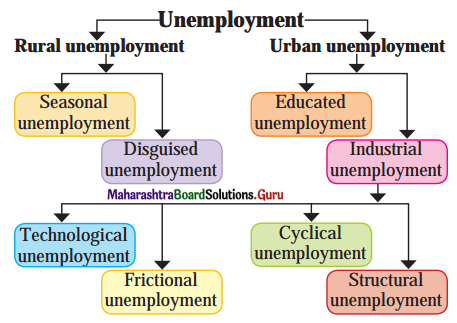
![]()
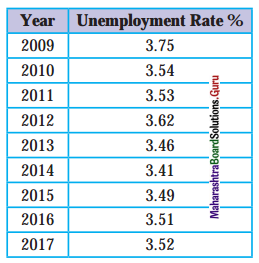
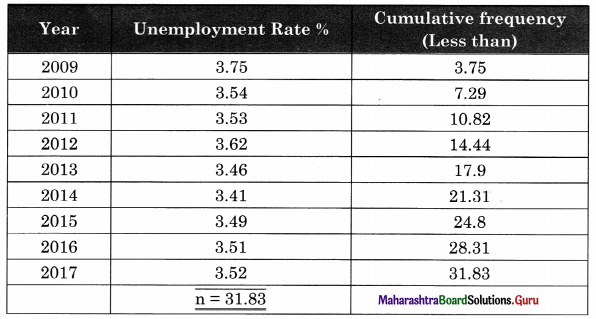
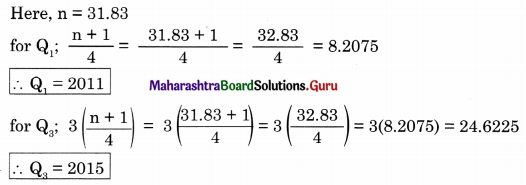
![]()
![]()
![]()
![]()
